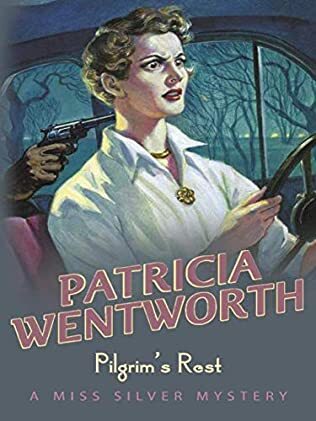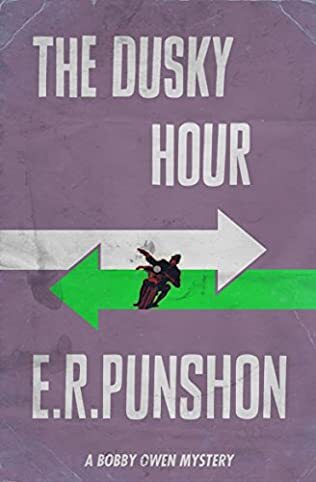Martin Fone's Blog, page 114
August 13, 2022
Own Goal Of The Week

And there it was, gone. BBC Radio 5 Love quietly dropped its reading of the classified football results last Saturday as part of the station’s shakeup to accommodate its broadcasting of a Premier League game each week that kicks off at 5.30 between two teams of overpaid footballers that no one is particularly bothered about other than those in that particular stadium.
When football was football, all matches kicked off at 3pm on a Saturday and listening to the signature tune for Sports Report and the reading of the football results was a ritual, providing fans with a comprehensive survey of what had gone in all the leagues no matter how lofty or lowly in status. There would be a groan when the news that a certain result was not yet in, suggestive of some late drama or the phone lines from one of the darker reaches of the country had gone down. Fans would rush to their cars to be certain to catch the dulcet tones of James Alexander Gordon or congregate in reverent silence around a chap in an anorak on the station platform who would obligingly turn his transistor radio up for the reading.
Of course, the primary purpose of the service which started in the 1950s was to let punters check their football coupons – remember those? – and the ubiquity of smartphones and apps means that anyone anywhere can get up to the minute scores of any match anywhere, but there seemed to be an air of authority and inevitability about a result announced on the Beeb. Hearing them required concentration and they seemed to stick in the memory. There was a curious sort of kudos to be earned in the evening when you were able to answer the inevitable query about the fortunes of Cowdenbeath that day.
Following on from the closure of the last of the Saturday evening sports papers, the ending of the classified football results is another moment when leagues outside of the Premier are starved of the oxygen of publicity. It is an own goal of gigantic proportions from an organization that purports to be a public service and needs to be shown the red card.

August 12, 2022
Thirty-Nine Of The Gang

These days the activities of the Salvation Army provoke little in the way of public disquiet but that was from the case in the late 19th century. Their brand of militant Christianity aligned to their abhorrence of alcohol and their public displays of strength by holding marches through the streets provoked a violent reaction from groups who became known as Skeleton Armies. The first three were established in Whitechapel, Exeter, and Weston-super-Mare,
The groups carried banners with skulls and crossbones on them or two coffins. Their rallying cry was “Beef and Thunder”, a direct retort to the Salvationists’ “Blood and Fire”, and they popularised the initials BBB, standing for Beef, Beer, Bacca in response to the soup, soap, and salvation of their opponents. The tactics they deployed to disrupt the Salvationists’ activities including throwing rocks and rats, organising raucous counter marches, and using physical violence.
A typical example was reported in the Daily News of January 10, 1883; “Serious Affray between the Skeleton and Salvation Armies. A man named Timothy McCartney is at present lying in the London Hospital suffering from a severe wound in the back, which he received from one of the members of the Skeleton Army”. In 1889 at least 669 Salvationists were assaulted, but the activities of the Skelton Armies died out by the mid-1890s, leaving Skeleton Army as a street term for street fighting.
On a more domestic note, skying a copper was slang for making a disturbance or upsetting the apple cart. It took its name from a popular comic song composed by Thomas Hood, based on his poem, A Report from Below. The illustration accompanying the sheet music for the song shows a copper tub exploding, to the consternation of two women.
August 11, 2022
Makar Original Dry Gin

It is worth being reminded from time to time that gin is supposed to be juniper-led, something that is often forgotten by distillers who believe that the key to gaining edge in the crowded marketplace created by the ginaissance is to pick on an outlandish botanical as their signature note or to come up with a flavour combination that leaves the juniper waving the white flag as it sinks into the abyss. In Makar Original Dry Gin The Glasgow Distillery, the city’s first modern-day distillers, has created their own homage to the botanical that is the foundation block of gin, juniper.
Produced since 2014, it uses seven other botanicals – lemon peel, black peppercorns, coriander seeds, cassia bark, rosemary, angelica root, and liquorice – each carefully selected to complement, support, and enhance the juniper. The line-up may look a little old-school, nothing wrong in that, but the addition of rosemary gives it a little bit of intrigue. The botanicals are distilled slowly in a 450-litre copper pot still, which goes by the name of Annie.
The bottle is a piece of work in its elegance, one that would grace any collection. It is tall, slender and heptagonal in shape, with a slight lip to the shoulder, leading to a short neck and, surprisingly, a metallic screwcap. Each of the sides represents one of the supporting botanicals, each of which is illustrated and named on the blue band around the neck, paying their own particular homage to the star of the show, the juniper berry, illustrated in all its glory on the top of the cap.
The labelling makes good use of the Scottish blue with lettering in white with gold edges or in gold. The labelling on the rear promises that “the enlivening power of the finest juniper berries is complemented by seven harmonising botanicals, shipped to Glasgow from around the world. The result is a sophisticated gin of individual character, perfect for gin-led cocktails and invigorating with tonic”. Bold claims, indeed.
On the nose the aroma is distinctly and welcomely that of juniper with some herbaceous notes around the edges. In the glass it is a crystal-clear spirit which initially is rather light, almost delicate in taste, before the juniper comes roaring in to remind us that it rules this particular roost. With some reluctance it subsides to allow the rosemary to add some floral notes before concluding with a peppery finale.
In Makar, the Gaelic word for poet, the Glasgow Distillery has composed their own distinctive ode to the botanical that is the cornerstone of gin. With an ABV of 43%, this is gin as it should be, delicious with a premium tonic and bold and spicy enough to work well in classic cocktails such as a Martini or gin’s own version of a Bloody Mary, the Red Snapper.
It is as good a gin as I have tasted in some time.
Until the next time, cheers!
August 10, 2022
Pilgrim’s Rest

A review of Pilgrim’s Rest by Patricia Wentworth
There have always been Pilgrims at Pilgrim’s Rest. Any member of the family who has the audacity to suggest putting the property up for sale seems to meet an untimely death. There is not something nasty lurking in the woodshed, more something unpleasant lying in the cellar. The body count is high in this, the tenth in Patricia Wentworth’s Miss Silver series, originally published in 1946 and which goes by the alternative title, Dark Threat, in the States, a curious but entertaining story.
The set up requires a suspension of belief as there is coincidence after coincidence. Detective Sergeant Frank Abbott just happens to bump into a Judy Elliott, for whom he has been carrying a flame but has not seen for a year, and she tells him that it just happens that she has accepted a job offer at Pilgrim’s Rest which just happens to be in the village where Frank grew up. Frank does not want her to take the job because some strange things have been happening there over the last three years – a disappearance, an odd horse accident, and two near-death experiences for the present incumbent, Roger Pilgrim.
Indeed, Frank has advised Roger to consult Miss Silver over his fears that someone is out to kill him, having survived a ceiling falling down around him and a fire. Miss Silver obliges and settles in at Pilgrim’s Rest, ostensibly to protect Roger. She fails miserably, as Roger falls out of a window to his death, ignoring her advice that he should not proceed with putting the house up for sale. The other son, who has been taken prisoner of war in the Far East is reported as having died, conveniently, at around the same time and so responsibility for the house passes to an invalid cousin who is under the constant care of a live-in nurse.
Miss Silver, convinced that the deaths of Roger and his father were suspicious rather than unfortunate accidents and that there was someone who was determined to prevent the sale of the house, wonders whether it is all linked to the mysterious disappearance of one of the family three years ago. A search of the house reveals a grisly secret, as well as a whiff of cannabis indica, but who could be the culprit. Was it the butler, Robbins, who hides a dark family secret and is occasionally spaced, the two maiden aunts, one a gardening enthusiast and the other one who takes delight in her various incapacities, or the nurse who has been living in for just over three years?
Much of the charm of the book is the interplay between Miss Silver and two of her favourite detectives, Abbott, an ardent fan of hers, (no Lamb this time) and Randall March, whose governess she used to be, but who on this occasion becomes exasperated with her theorising that disturbs what, to his mind, is an open and shut case. Oddly, the culprit is revealed with a good chunk of the book still to go, and they get away with it. The rest of the book generates some thrills and spills with an abduction and a car chase and the simmering love interest which flits in and out of the story line comes to a surprising end.
There are too many coincidences for this plot to work, but Wentworth is a good story teller, the narrative is well-paced, and the reader is happy to let her guide them where she wills. Her books are never classics, but usually entertaining. This one fits the bill.
August 9, 2022
The Dusky Hour

A review of The Dusky Hour by E R Punshon
This is the ninth in Punshon’s Bobby Owen series, also known as Death in the Chalkpits, originally published in 1937 and reissued by Dean Street Press. The young Detective-Sergeant begins to come into his own, helped by the fact that the complexities of the case cause his Chief Constable, Colonel Warden, to have something akin to a nervous breakdown, allowing the young whippersnapper to resolve the case in his own inimitable way. As we come to expect with Punshon, there is a glorious set piece towards the end, when all the suspects slug it out and Owen reveals that he has skills which might win him a crown at the Police Boxing Championships.
What starts off as a simple enough incident – a man has been shot twice and his body is found in a car which has been pushed over into a chalk pit – turns into a complex tale of financial swindling, illustrating that there is no honour among thieves. The plot is more complex than some of Punshon’s featuring murder, share-pushing, where mugs are found to buy shares in worthless companies, card sharps, false identities, marriage proposals, American connections, and vendettas. The holy grail that a couple of gangs of criminals and members of the family who originally owned them are after are some bearer bonds worth a small fortune.
Punshon offers an interesting insight to a particular type of criminal who is prepared to play a long game, sowing the seeds of a plot, allowing it to mature, and then strike when the victim is hooked in. The rewards that such stings can generate, if the plot is successful, more than compensates for the long gestation period of the plan.
Each of the prime suspects, and there are a number of them, is keen to appear helpful to the authorities by explaining where they were and what they were doing around the critical point. Each seems to have a clear alibi and each of them, helpfully but to the growing despair of Colonel Warden, provides their own theory as to what happened and whom they believe the prime suspect to be. There is a section of the book where the investigators are passed form pillar to post. No wonder Warden gave up, leaving Owen with the freedom to pursue his own theories and cut the Gordian knot.
The alibis are some of the oddest that I have come across in Golden Age detective fiction, including a bull photographed in a certain field at a certain time, a hat which had only been delivered that day, and a cat spotted causing a traffic accident. The moral of the story is that if you are going to hand over evidence to the police, make sure that it suits your cause.
Once again, Punshon uses Owen to cast doubts upon the effectiveness of capital punishment and the young officer espouses the shocking thought that officers should have a warrant to search a property, something that many stories spawned by the genre cheerfully ignore but given especial emphasis when a chauffeur puts the police in their place when they arrive without the relevant piece of paper. This is symptomatic of Punshon’s socialist leanings which are allowed to peep through from time to time, especially when he pokes fun at Conservative views and prejudices.
In what is a complicated plot, perhaps overly so requiring a long explanation of how it all fits together at the end, Punshon manages to maintain pace and interest. The narrative has a rhythm of its own, his language less florid than in some of his earlier works, and the story builds up to a dramatic finale. I did spot the culprit but to Punshon’s credit he did make me wonder whether I was right at times.
August 8, 2022
How Coffee Is Decaffeinated

Doctor Poison might have risen to Goethe’s challenge and discovered caffeine, but the solution to the playwright’s sleep problem was almost a century away and was discovered by accident. Caffeine, a white, bitter-tasting powder in its pure state, is soluble and can be extracted by waterlogging a green, unroasted coffee bean. When German coffee merchant, Ludwig Roselius, took delivery of a shipment of coffee beans in 1903 that had been soaked, he was loathe to throw it away. Instead, after processing some of the beans, he found that the drink tasted and smelt like coffee, just minus the caffeine which the seawater had washed out.
Replacing seawater with benzene, a chemical that, at the time, was used in paint strippers and aftershave, Roselius developed a process for decaffeinating coffee beans which enabled his company, Kafee HAG, to become the first, in 1905, to offer instant decaf coffee on a commercialised basis. Benzene, though, is a known carcinogen and nowadays coffee merchants, who use a chemical-based method to extract caffeine, deploy either methylene chloride, itself toxic if humans are exposed to high quantities, or ethyl acetate.
The green coffee beans are either soaked in hot water and then washed in a chemical solution (the indirect-solvent process) or steamed for about thirty minutes, then washed in the chemical solvent before being steamed again to remove any solvent traces (the direct-solvent process). Purists claim that exposing the beans to hot water, either directly or as steam, damages their natural oils and flavours before the start of the extraction process.
More recently two non-solvent-based methods for extracting caffeine have been developed, the earliest of which to be used commercially, the Sparkling Water method, was also discovered by accident. In 1967 Kurt Zosel, a chemist at the Max Planck Institute for Coal Research in the Ruhr, was working with carbon dioxide and discovered that when the gas is heated and put under pressure, it can be used for separating different chemical substances.
The beans are gently moistened which causes them to expand and widen their pores, giving the more mobile caffeine molecules more room in which to move. They are then washed over with a natural carbon dioxide solution which eases out the caffeine, a process which produce little waste, is completely chemical-free, and does not damage the flavour of the coffee.
Alternatively, the Swiss Water Process, developed in Switzerland in 1933 but not used commercially until 1979 by Coffex S A, uses a heated proprietary Green Coffee Extract (GCE) which contains all the water-soluble compounds found in coffee, except caffeine. The green beans are soaked in it, causing them to swell, expelling the caffeine molecules into the GCE while retaining the more volatile taste and smell compounds. This process can take between eight to ten hours before all the caffeine is removed. While the GCE can be reused for the next batch, critics point out that by doing so the unique qualities of a particular batch of beans can be compromised.
Decaf coffee beans look different from their caffeinated confrères, shinier and darker in colour, a consequence, Andy Cross of Two Chimps Coffee[1] explains, of their drying process, during which, while heated, they rub against and polish each other, creating their characteristic sheen. However, the colour adds to the roaster’s difficulty in judging when they are ready as does their reduced bound water content which accelerates the speed at which they roast. Nonetheless, if decaffeinated well and in the hands of a skilled roaster, decaf coffee will taste just as delicious as regular coffee. I wonder what Goethe and Doctor Poison would have made of it all.
August 7, 2022
Device Of The Week (5)

Good news for hot dogs (and cats). Until it starts raining cats and dogs again, if it ever does, one problem facing pet owners is how to keep their furry friends cool. A Tokyo-based maternity wear manufacturer, Sweet Mommy, has teamed up with some veterinarians to come up with a pawsible solution.
Retailing at 9,900 yen (around £60) and the brainchild of company president, Rei Uzawa, it is an eighty-gram, battery operated fan that is attached to a mesh outfit and blows cool air around the animal’s body.
It is such a simple idea that it is a wonder that it has not been thought of before. Japanese pet owners are hounding the company in a desperate attempt to get their hands on one. Whether it will find its way to these shores before we are bemoaning the cold weather, only time will tell.
August 6, 2022
Sporting Event Of The Week (31)

England’s women might have won the Euro championships, but Scotland has just crowned its first national tree-hugging champion. The Inaugural Scottish Hugging Championship was held on July 22nd at Ardtornish as part of the Morvern Games and Gala Week. Organised by Darach Social Croft and An Darach Forest Therapy, the competition attracted twenty-four competitors, double the number the organisers had anticipated.
There were three events on the programme; speed hugging, where competitors had to hug as many trees in a specified area in a minute, with each hug lasting a minimum of five seconds, dedication, where participants had to hug a tree for up to a minute in a way that showed presence, intention, love, and respect, and freestyle, where entrants were required to demonstrate the most inventive way to hug a tree, again for no more than a minute.
The winner was Alasdair Firth, who was dressed appropriately in a leaf-covered camouflage suit and lives in a woodland croft in Rhemore on the Morvern peninsula.
The event was held in association with the World Tree Hugging Championships held annually in the HaliPuu Forest in Levi, in Finland. This year’s championship will be held on August 20th and is one I shall follow closely.
To watch the Scottish event, clink the link below
August 5, 2022
Thirty-Eight Of The Gang

According to James Ware in his Passing English of a Victorian Era, there were compensations to be had from a spell of wet weather. Pavement were rudimentary and soon turned into a sea of mud, heralding the arrival of Shulleg Day. To prevent their long dresses from dragging in the mud, women would hitch them up, revealing a glimpse of ankle and lower leg to onlookers. Shulleg is a mangling of show-leg.
We know what a sit-down supper is, but what is fascinating was why it was necessary to emphasis that a meal would be taken sitting at a table. Apparently, in the late 1850s the medical press began to agitate against the practice of ostentatious and expensive banquets. The result was a more economical approach to feeding an assembled crowd, by inventing the stand-up meal, which by necessity was a thinner meal than a banquet. Old-fashioned people, Ware wryly observes, adopted this term to emphasis the difference.
Looking for an inventive way to describe an impossibility? Try six buses through Temple Bar, a phrase attributed to the MP, General George Thompson, who represented Tower Hamlets from 1847 and was a prominent abolitionist. John Bright, speaking in Leeds on October 18, 1883, gave some colour to the phrase when speaking against the proposed Suffrage Bill. He said that those proposing it “will be committing that great mistake which our old friend General Thompson used to describe as being made by the man who insisted on driving six omnibuses abreast through Temple Bar”. They just would not fit!
August 4, 2022
Barra Atlantic Gin

Barra, the second southernmost inhabited island of the Outer Hebrides, is known as the “Garden of the Hebrides”, home to an abundance of flora and fauna including over a thousand species of wildflower. It is also now home to Isle of Barra Distillers who produce Barra Atlantic Gin, but when Michael and Katie Morrison launched it in August 2017, it caused a bit of a stushie. The problem was that it was not only contract distilled but the distillers that the husband-and-wife team had chosen to use, Thames Distillers, were based in London. The prospect of a gin masquerading with a Scottish name but produced south of Hadrian’s Wall was too much for some to bear.
Happily, the Morrisons received their full distiller’s licence in May 2019 and were able to move the production of their spirit to the island where it is distilled, bottled, and labelled. Having overcome that obstacle, they now have ambitions to distil their own whisky on the island that was made famous as the location for the 1949 film adaptation of Compton Mackenzie’s comedy classic, Whisky Galore! To help bring their dreams to fruition by part-funding the enterprise, they have established a Membership Club which, as well as giving first dibs on their whisky, also offers other benefits such as the opportunity to secure a bottle of their Gold Cave Cask-aged Gin, a limited edition of 501 bottles. Ambitions galore!
Cementing their association with the island, the Morrisons have chosen to use as their signature botanical Carrageen seaweed. A red alga which they hand-forage from the shoreline, it is a particular favourite with the islanders who use it to make a seaweed pudding, his grandmother’s proving the inspiration for Michael’s use of it in the gin, as a broth and a form of blancmange.
As well as Carrageen, there are sixteen other botanicals used, which include liquorice, lemon peel, juniper, angelica root, orris root powder, mint, Quebec peppers, lemon balm, elderflower, dried peppermint, coriander, orange peel, cassia bark, chamomile flowers and, intriguingly, two mystery botanicals. Apparently, a lucky night at the roulette wheel on number seventeen convinced the Morrisons that seventeen was their lucky number, but I would hope, charming as the story is, there is a bit more science behind their calibration of botanicals.
The bottle is elegant, perfectly cylindrical with a broad shoulder and a medium-sized neck leading to a wooden stopper with an artificial cork. The label, designed by Devon artist, Jemma Lewis, has a floral, rockpool look and marbled effect, caused by the addition of Carrageen to the paint which causes the oils to rise. It uses a dark blue background and white lettering to optimal effect, informing me that it is “Island born, fearless spirit” and that their inspiration comes from the adventurous spirit of the Barra people.
The gin itself does not disappoint. Drinking it is an experience rather akin to standing on the coastline, mouth agape, watching the waves roll in. This complex spirit ebbs and flows between sweet and spicy, underpinned by a slightly oily juniper before finishing with zesty citrus and a mild saline taste from the Carrageen on the lips. Working well a mixer, Atlantic Gin is impressive, delicate, and seductive, belying its 46% ABV strength.
After a stormy beginning, the squall clouds have lifted for Isle of Barra Distillers. I hope their other plans meet with the success they deserve.
Until the next time, cheers!



